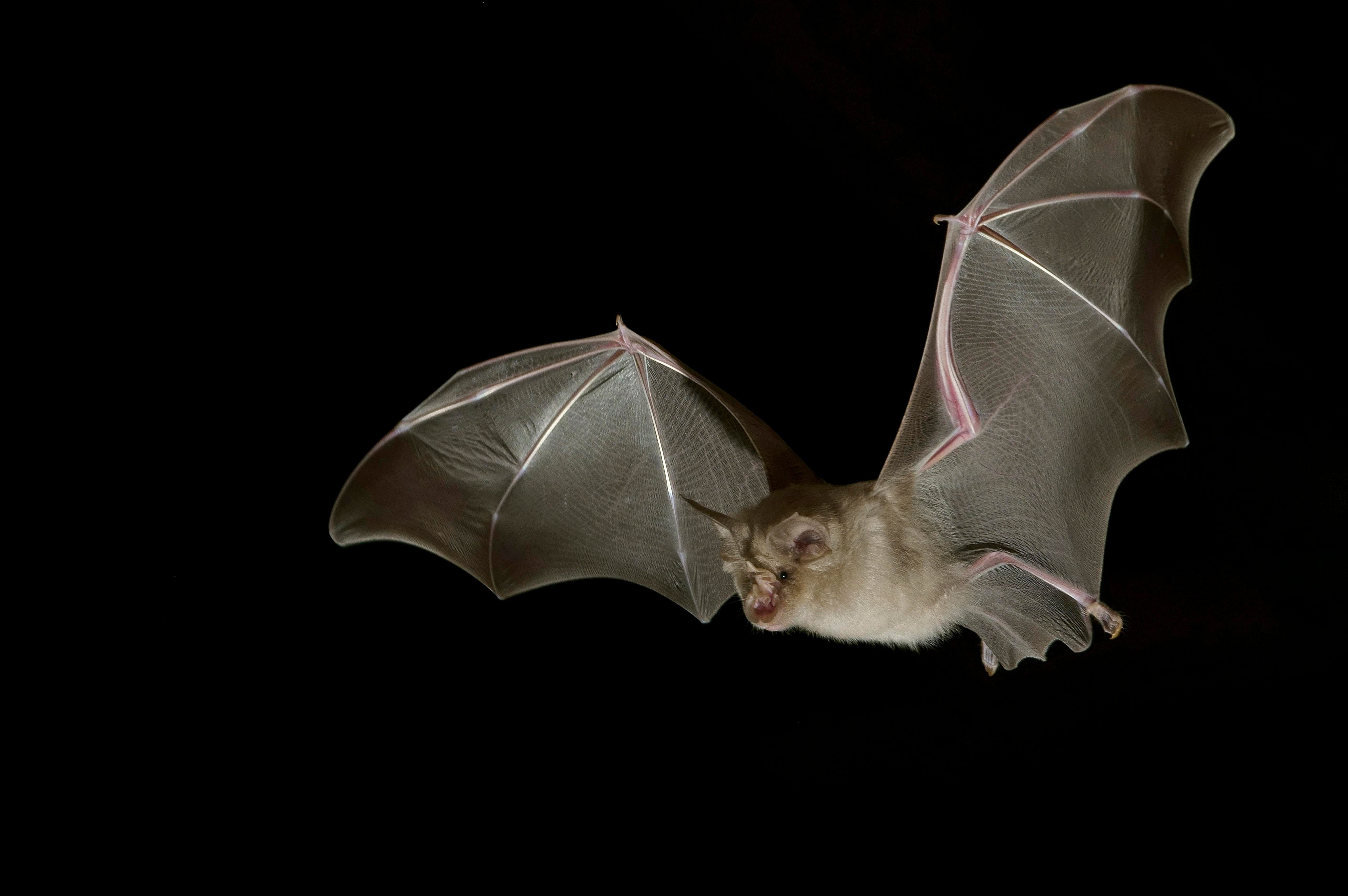
The virus that causes COVID-19 probably shared an ancestor with bat coronaviruses more recently than scientists had thought. But finding the direct ancestor of SARS-CoV-2 is very unlikely, say researchers.
The full genomes of SARS-CoV-2 and several closely related bat coronaviruses suggest they shared a common ancestor several decades ago. But the viruses are known to swap chunks of RNA with each other, a process called recombination, so each section has its own evolutionary history. In the latest analysis, presented at the 7th World One Health Congress in Singapore on 8 November, scientists compared fragments of coronavirus genomes. The analysis suggests that some sections of bat coronaviruses and SARS-CoV-2 shared a common ancestor as recently as 2016—just three years before the virus emerged in people in late 2019. The work has not been peer reviewed.
The finding narrows the time between the ancestor of SARS-CoV-2 originating in bats and the virus jumping to people, say researchers. However, it doesn’t explain how SARS-CoV-2’s closest ancestor made this jump—an enduring mystery of the pandemic, which many scientists agree probably involved an intermediary animal.
Direct ancestor
The study highlights how difficult it will be to find the direct ancestor of SARS-CoV-2 in bats, given how often coronaviruses recombine and how much time has passed. The chances of finding a direct ancestor “are almost nil”, says Edward Holmes, an evolutionary virologist at the University of Sydney in Australia. “That ship has sailed.”
SARS-CoV-2’s direct ancestor probably formed from several viruses and has been recombining and mutating in bats ever since, says Joel Wertheim, a molecular epidemiologist at the University of California, San Diego, who contributed to the latest analysis. Sampling bats for coronaviruses could possibly identify viral fragments that are more closely related than those found in known coronaviruses so far, but probably won’t reveal one direct ancestor, he says.
Since the pandemic began, many researchers, particularly in southeast Asia, have been sequencing coronaviruses found in bats and other mammals. They have also sequenced coronaviruses in older tissue samples stored in freezers in the hopes of finding the pandemic virus’s origins. But scientists have struggled to find a progenitor virus for SARS-CoV-2, which has led to speculation that the pandemic was sparked by a virus that accidentally escaped from the Wuhan Institute of Virology, situated in the city where the pandemic started. The laboratory has worked on related coronaviruses.
Viral chunks
More than a dozen viruses closely related to SARS-CoV-2 have been isolated from bats and pangolins so far. To determine their relationship to SARS-CoV-2, researchers often compare their entire genomes, which are about 30,000 nucleotides long. Using this method, they have found that SARS-CoV-2’s closest known relatives are a bat virus found in Laos called BANAL-52, whose genome is 96.8% identical to that of SARS-CoV-2, and a virus called RaTG13, found in Yunnan, southern China, which is 96.1% identical. The 3–4% difference between their genomes and that of SARS-CoV-2 suggests that there has been about 40–70 years of evolution since these viruses shared a common ancestor.
But researchers say that comparing whole-genome sequences ignores the role of recombination in virus evolution. Some chunks of RNA could be very different from SARS-CoV-2, suggesting they are more distantly related, whereas other fragments that are much more similar imply a closer relationship.
To account for recombination, the researchers compared 18 bat and pangolin viruses closely related to SARS-CoV-2, and spliced them into 27 segments. Each segment—a few hundred to a couple thousand nucleotide sequences long—has a different evolutionary history, says Spyros Lytras, an evolutionary virologist at the University of Glasgow, UK, who presented the work in Singapore. For each segment, the researchers used a larger subset of 167 related viruses to estimate how recently SARS-CoV-2 shared a common ancestor with a bat or animal virus. The work was described in a post on the virological.org discussion forum last month, and the co-authors plan on submitting it to a journal early next year.
Years, not decades
The analysis revealed that some segments shared a common ancestor with SARS-CoV-2 just a few years ago. Most of the fragments shared a common ancestor around 2007, but one small chunk, some 250 nucleotides long, could have shared a common ancestor in 2016, and another 550-nucleotide-long fragment in 2015—only 3–4 years before SARS-CoV-2 emerged in people. The youngest fragments were from bats sampled in Yunnan and Laos. Given the distances these viruses can move with their bat hosts, the analysis suggests that southern China and southeast Asia are hotspots for the ancestors of SARS-CoV-2, says Lytras.
“It’s a clever approach,” says Holmes. “It gives you the purest signal of evolutionary time.” He points out, however, that some fragments were quite short, which makes those estimates less reliable because there are only a limited number of RNA nucleotides to compare.
This article is reproduced with permission and was first published on November 10 2022.
